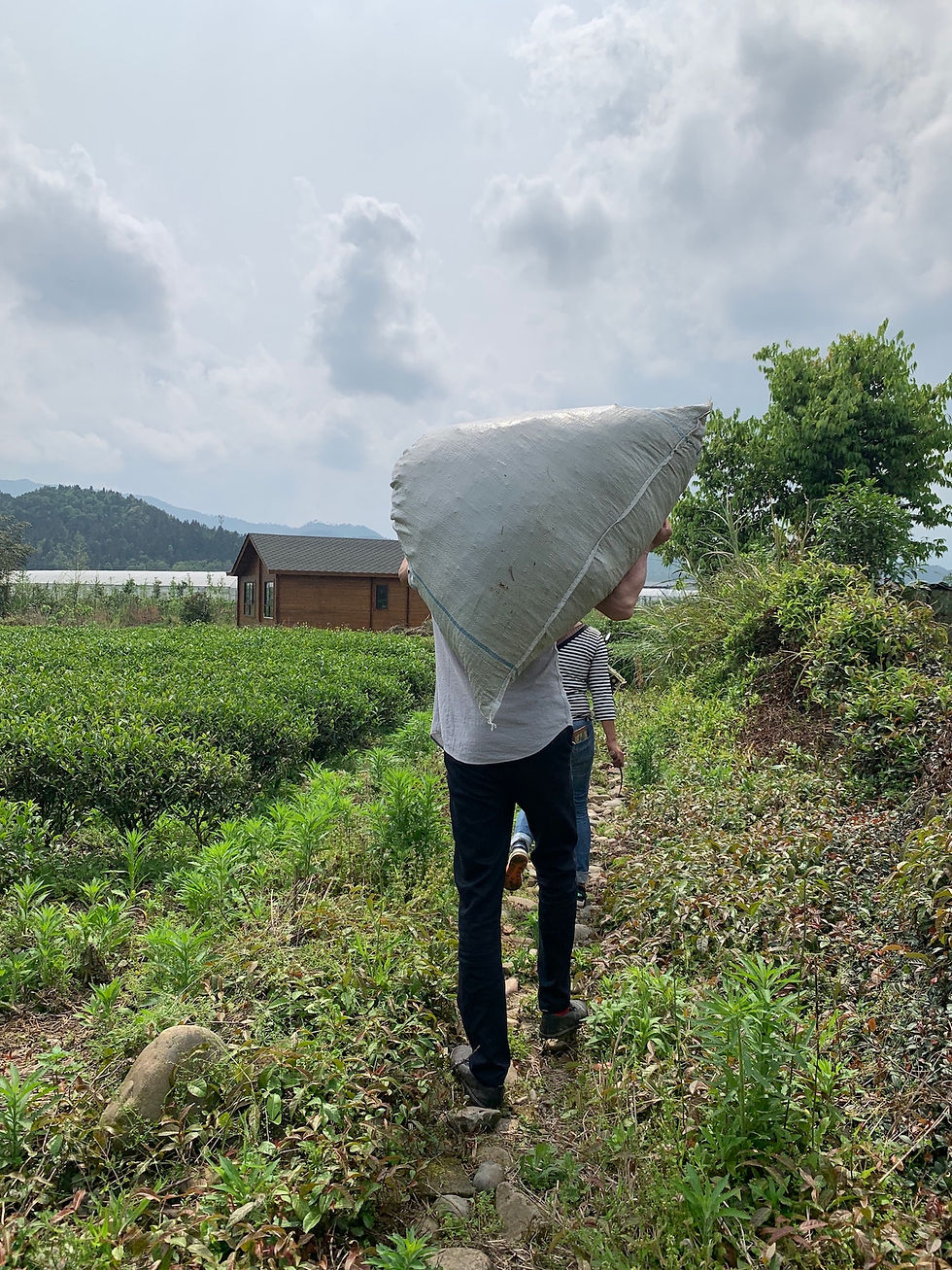Blog 114: Our Spring Oolong Tea Season Has Begun
- Valley Brook Tea

- Apr 23, 2019
- 3 min read
Last week, we officially started this year’s Wuyi oolong (Yancha) season.
Some tea lovers might be surprised at this timing. Some green tea products from this spring’s harvest are already on the market. Just hundreds of kilometers away, our white tea harvest has been going on for about a month already. Why does our oolong have such a late harvest?
Indeed, compared to most teas, Wuyi oolong has a very late harvest. By the definition of lunar calendar, Wuyi oolong’s spring harvest is actually closer to the beginning of summer. This year, some late-maturity Wuyi oolong cultivars even have a harvest time in mid/late May.
Of course, this does’t mean oolong is harvested in summer. In Wuyi mountains, every tea mountain field has its own small climate. Even for the same tea plant cultivar, different tea mountain fields have slightly different harvest time.

In general, the tea maker in charge (in our business, Mr. Xue Sr. is the master tea maker) make the harvest decision based on the growth of green leaves. In our tea-making, we use a term called “Kai Mian/开面” when determining when to harvest. In Chinese, “Kai Mian” literally means how “open” and “extended” tea leaves are. (See pic below)

Wuyi oolong’s tea-making is demanding for both tea makers and fresh tea leaves. During the process, fresh leaves are shaken, rolled, dried and roasted. If fresh leaves are too tender, or not sufficient “Kai Mian”, they won’t last the tea-making process. Only larger, stronger, and more mature leaves are tough enough for the test.
This means that Wuyi oolong leaves needs more time than most other teas. For example, green tea and white tea are harvested when they’re in a bud state, but Wuyi oolong has to wait until leaves reach maturity.
The difference greatly affects the harvest time. At a similar growth rate, green tea and white tea can be harvested in late March or early April, but Wuyi oolong has to wait till late April.
Once the harvest starts, the entire tea-making region would acquire a strong and passionate floral aroma. This aroma is quite short-lived. Processed fresh leaves would no longer carry this distinct aroma. It’s simply a smell you have to experience in person.

To seasoned tea makers like ours, they can know the quality of the harvest from just this aroma. Our own Mr. Xue Sr. would adjust the withering process based on the aroma from the leaves.
Sometimes, if there’s a delay during the transfer from tea mountains fields to our facility, the whole truckload of fresh leaves would smell “tired” as if they just had a huge workout. In our opinion, this kind of harvests has a lower harvest quality, and the tea maker must decide how to proceed and amend the loss.
As an agricultural activity, harvesting fresh leaves depends on various factors. In mountains, the temperature, humidity and sunlight condition are constantly changing. Therefore, the quality of fresh leaves in a day varies as well. To harvest the best fresh leaves, tea makers need to assess all variables and decide when to start and wrap up the daily harvest.

The harvest is vulnerable to sudden changes in the weather. Last year, we had a very unfortunate spring frostbite right before the harvest. Luckily, we’re expecting a great harvest this year.
This spring, we’re experiencing a balanced rainy-and-sunny weather. In rainy days, nutrients are washed off cliffs/rocks and flowed into the tea field; in sunny days, tea plants can better absorb these nutrients and eliminate toxics. Our tea plants significantly benefit from this repeating circle of weather.
This season’s Wuyi oolong is definitely going to amaze us! Follow us on social media to get our latest harvest and tea-making updates!
We hope you enjoyed today’s blog. As always, if you have questions or suggestions, please leave a comment, tweet us @valleybrooktea or email the author directly at zhang@valleybrooktea.com. Please also follow us on Instagram @valleybrooktea and join our mail list to get our daily tea updates and our latest promotions!
Don’t miss our HARVEST SALE! Click for more!




Kaiser OTC benefits provide members with discounts on over-the-counter medications, vitamins, and health essentials, promoting better health management and cost-effective wellness solutions.
Obituaries near me help you find recent death notices, providing information about funeral services, memorials, and tributes for loved ones in your area.
is traveluro legit? Many users have had mixed experiences with the platform, so it's important to read reviews and verify deals before booking.